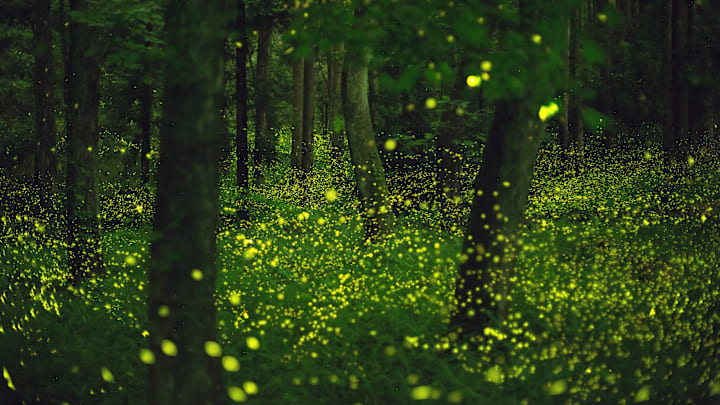Over the past few decades, firefly population have been declining due to factors like light pollution, pesticides, and habitat loss. Now there's a ray of hope: A recent study suggests there’s reason to be optimistic for these insects. They’re more prevalent this summer than they have been in years.
What’s Up With This Wave of Fireflies?

According to Popular Science, residents across the U.S. have been seeing a spike in firefly numbers in recent weeks. There have even been upticks in urban areas, such as New York City and Washington, D.C.
While firefly numbers still aren’t what they used to be, the change signals a positive outlook for the insects. The increased numbers of the glowing bugs in many states could be attributed to the factors below:
- Weather: Climate plays a significant part in firefly reproduction, as they tend to seek out wet soil to lay their eggs. Many states saw decent rainfall this year, which could have led to the insects’ population growth.
- Lifecycle: Firefly larvae live for about two years before pupating and becoming the bioluminescent creatures we’re familiar with. When the insects emerge from their pupal stage to find mates, they will live for a few weeks, depending on the environment and species. Firefly prevalence can vary by year because of this factor, and some places may be simply experiencing good timing this summer.
Why Are Fireflies Important?

Fireflies aren’t just aesthetically pleasing; They also help the environment. A 2019 report from the Xerces Society for Invertebrate Conservation highlighted the ecological benefits of fireflies. The larvae of the species primarily feed on snails and slugs, both of which damage plants. These insects also contribute to the diets of many creatures in the animal kingdom, especially various spider species. Environment America also shares that some species feed on pollen and nectar, benefiting many flowering plants.
We may be lucky enough to enjoy their twinkling light shows for years to come if we make an effort to take care of them. You can help fireflies out by doing simple things, such as turning off lights at night so as not to confuse the insects, and mowing lawns less frequently. It also won’t hurt to avoid using pesticides outside and share your awareness about the lovely creatures.
Not everyone gets the pleasure of seeing fireflies light up their environment in person, but you can watch a video of synchronizing fireflies doing their thing in Thailand.
Read More About Insects:
